A mirrorless Leica M-mount camera to appeal to owners of manual lenses is now looking more likely, according to Leica Rumors and other sites. It has certainly been talked about often and I can remember a lively discussion on the subject during Stefan Daniel’s presentation to the LHSA in Wetzlar last October.
I remain unconvinced. I do not think an M-mount mirrorless would make financial sense for the company because of its limited appeal. I hope I’m wrong, though. I’d probably buy one, but how many others would get out their credit cards?
Far more likely than an M-mount mirrorless, I suggest, is a smaller L-Mount full-frame candidate. The only objection to this, from Leica’s point of view, would be the lack of equally diminutive lenses in the range, but things would undoubtedly change in the wake of a launch of the L-Mount Alliance.
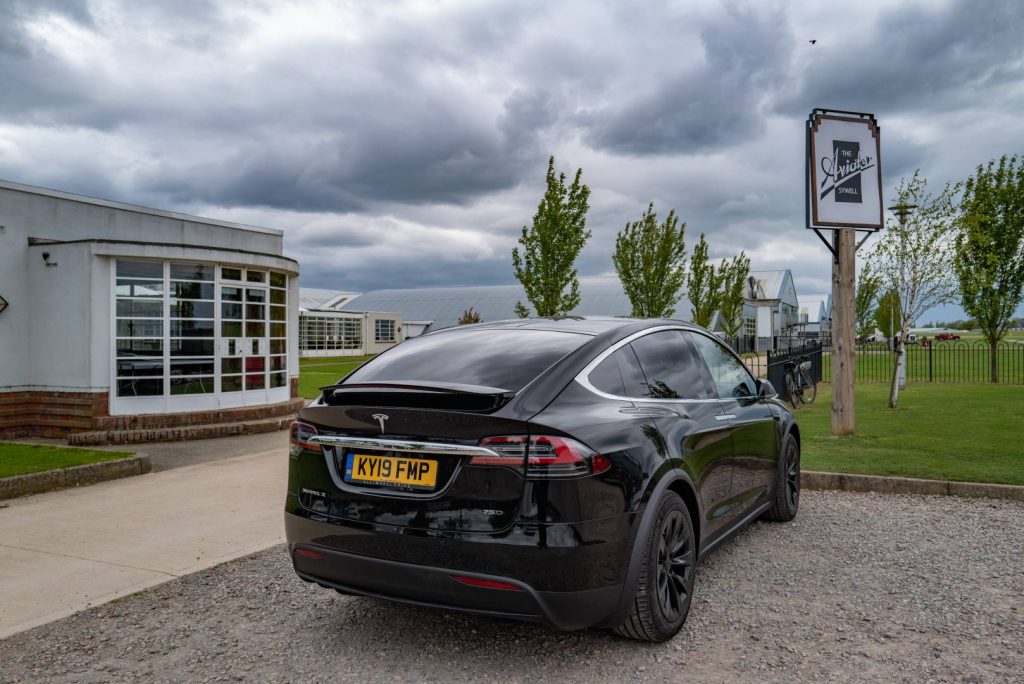
Hatching
If there is such an egg being carefully hatched in Wetzlar, in defiance of the bean counters, I do have some suggestions of what I would like to see. After all we already have two prime candidates for full-frame mountification — the Q and the CL. Both bodies could serve, probably with little modification.
One currently has most of what is needed, centred on the full-frame sensor. All it lacks is a mount, M or L. The other already has the L-mount, but houses a cropped sensor.
Let’s fantasise for a moment. Indulge me if you would.
The bodies of these two cameras are surprisingly similar in dimensions. You wouldn’t immediately think it to see them side by side, but they share an identical footprint — both are 130mm long and 30mm deep. Only in height to they differ significantly. The Q2 is 80mm high compared with the CL’s 70mm. But move the tape measure to encompass the viewfinder hump and the total height of the CL jumps 78mm, almost the same as the Q2. This difference in height is noticeable mainly in the front view of the two cameras.
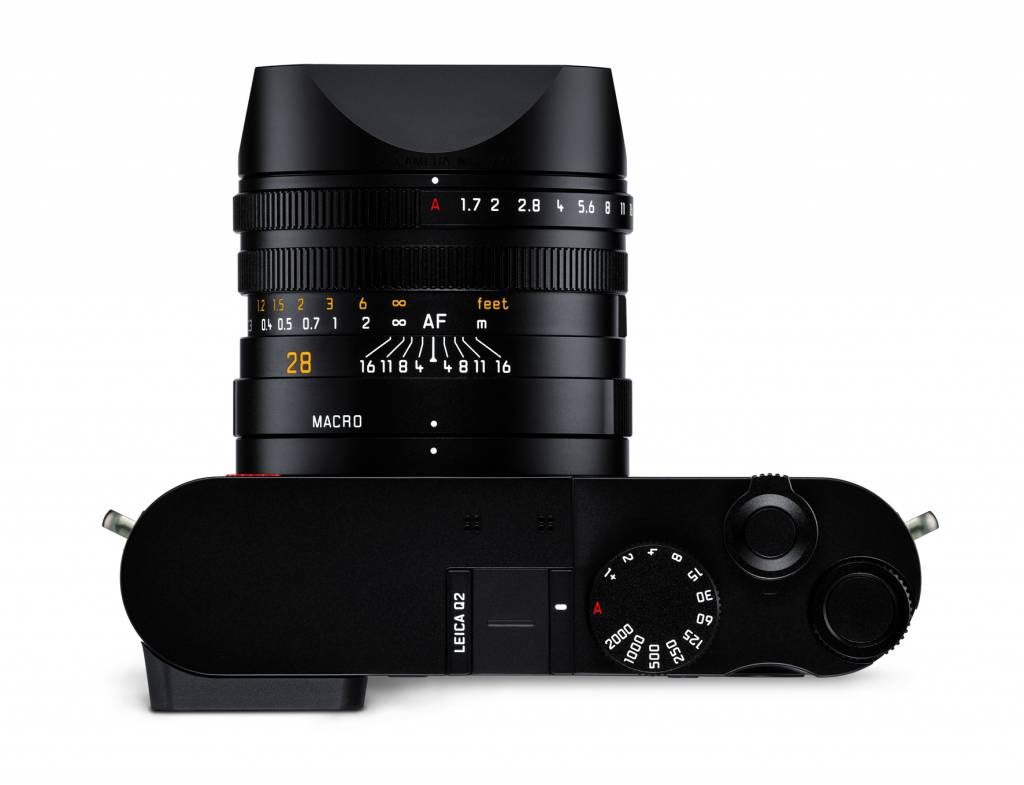
The Q2 has the same dimensions as the CL but is a little taller. It is a very sense and substantial camera in the hand 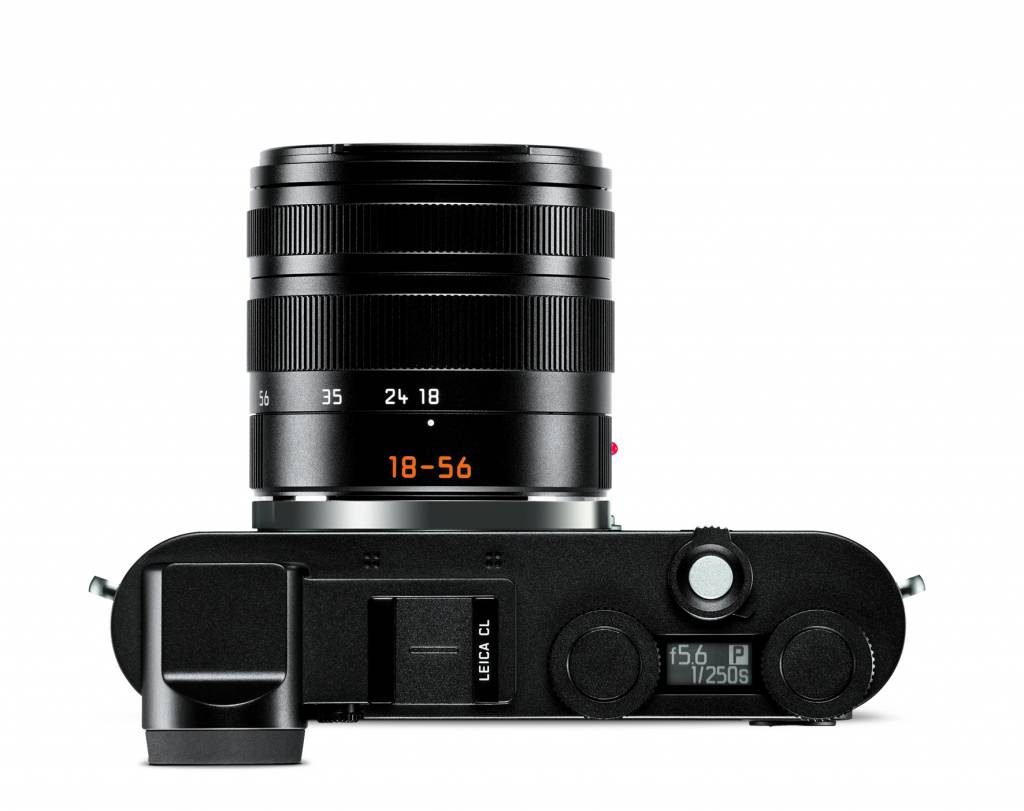
The CL feels much lighter, far less dense, but the similarities in overall dimensions are remarkable
Other than this, these two cameras have more similarities than you would at first imagine.
When it comes to weight, on the other hand, it’s a different story. The comparison depends on which lens is fitted to the CL, of course. The camera is at its lightest when wearing the 18mm pancake. It tips the scales at just 500g. Pick up the CL with this lens and it is a very lightweight affair. It feels lighter than the dimensions would suggest. It feels almost plasticky, but it isn’t. Leica designers did a good job keeping the weight down.
Weighty
We can’t make a direct weight comparison with the Q2 because the 28mm f/1.7 Summilux lens is of itself a much heavier component. But the Q2 weighs 765g and it feels it. This is one dense camera which actually feels heavier than it ought to. The lens is definitely the main culprit. The CL with the 23mm Summicron weighs 575g but still feels lightweight, and there is no TL lens which is directly comparable with the Q2’s impressive light gatherer.
In theory, the CL could house a full-frame sensor and accommodate either the current L mount or, even, an M-Mount, subject to maintaining the required distance between optic and sensor. Equally, the Q2 could be equipped with either lens mount.
I have no doubt that means could be found to produce a full-frame ILC mirrorless camera using the L-Mount and I believe it should be possible to adopt the M-mount as an alternative if Leica decided that would be a marketing option.
Control options
Either of these two camera bodies could be modified accordingly, but I would prefer the simpler control interface of the Q2 (with the physical shutter-speed dial) to the soft control layout of the CL. This would depend on the mount, of course. If the M-mount were to be adopted, then the Q2 layout with direct access to speed would be a sine qua non. With the L-mount (and the absence of aperture dials on native lenses), the designers would probably opt for the CL soft-control layout.
In deciding on what to use (that is, if anything is being considered) the factor would take into account the limitations of adopting the M-Mount. It would be fine for M lenses and, probably, welcomed with open arms by many traditional users. But it wouldn’t be much good for anything else. The L-Mount, on the other hand, is the future and it would enable the camera to handle modern autofocus optics while still permitting the use of M lenses via an adaptor. If I were in charge, I think I would go down the L-Mount route.
Incidentally, don’t forget that Panasonic has already said that a smaller full-frame version of the S1/R cameras is at the planning stage. Such a camera is what we are discussing here.
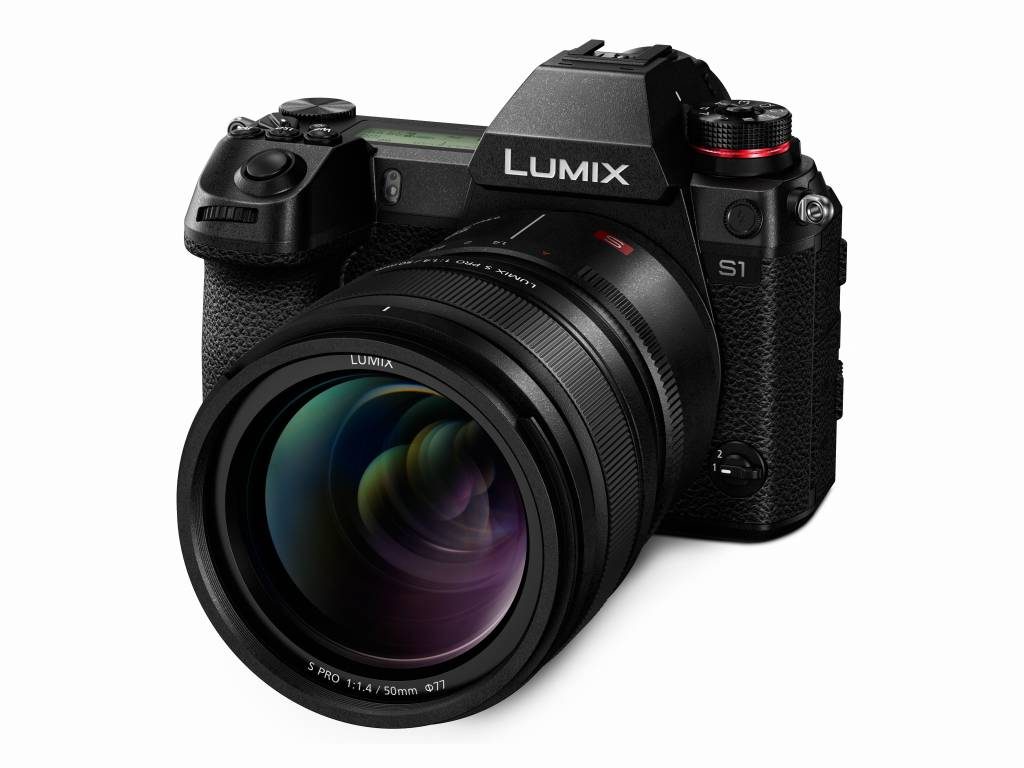
Faffing around
You will have noticed that owners of M lenses spend a lot of time bolting them to various non-Leica mirrorless cameras and then discussing the pros and cons. Many pages of forum space have been devoted to the merits of using M lenses on Sonys, Nikons and other cameras, And now there is a burgeoning discussion on the merits and disadvantages of using M lenses with the new Panasonic Lumix S1 and S1R.
Whenever these discussions take place, we come back to agreeing that M-lenses are more at home on Leica cameras, whether the TL, TL2 or SL. My friend and contributor, Jonathan Slack, is convinced of this and has little time for faffing around with M lenses on non-Leica cameras. I can see his point, although I am less discerning and have enjoyed pleasing results with, say, the Sony a7III.
We assume, and Leica has led us to believe, that sensor design, profiling and menu options for the SL and T cameras are designed with M glass in mind as an alternative to the native lenses. You get a bit more lens information feedback from Leica and you get recognition of your M lenses.
Drawbacks
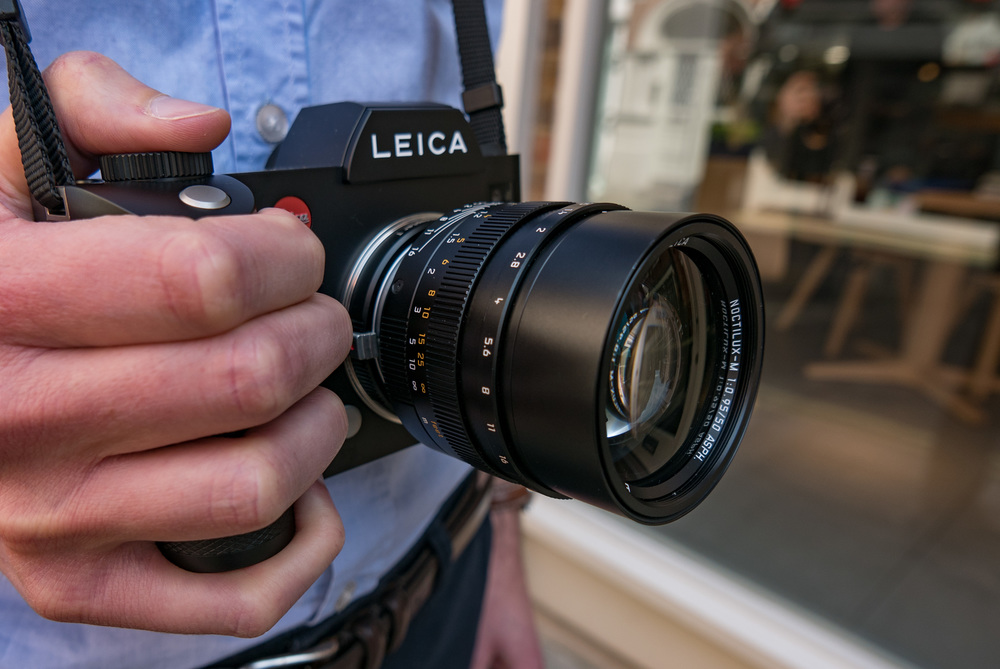
Yet both existing mirrorless options, the CL and the SL, have drawbacks when used with M lenses. The crop sensor of the CL increases the focal length by 50%, so M lenses used on the CL become longer than most of us would like. Addressing the popular 24-35mm range is a decidedly difficult if, for instance, your widest M lens happens to be 28mm.
The SL, on the other hand, behaves flawlessly with M lenses and is well tuned to their requirements. In focal length terms, what you see is what you get. This makes the SL the obvious choice if you want to use M lenses with a superb electronic viewfinder — it even beats the M in this respect since the Visoflex is now rather long in the tooth and is nowhere as involving
The SL also shines when used with heavier, bulkier M lenses. The 50mm Noctilux is a case in point. I believe that the SL is the natural home for the Nocti. It can be a bit of a prima donna when it comes to rangefinder focusing with the lens wide open (and there isn’t much point in using the Nocti if you aren’t shooting at 0.95 since there are better, lighter options out there). The 75mm Noctilux is likely to be equally at home on the SL. Both these lenses are a handful on the smaller M camera, which can feel unbalanced as a result.
Peas on drums
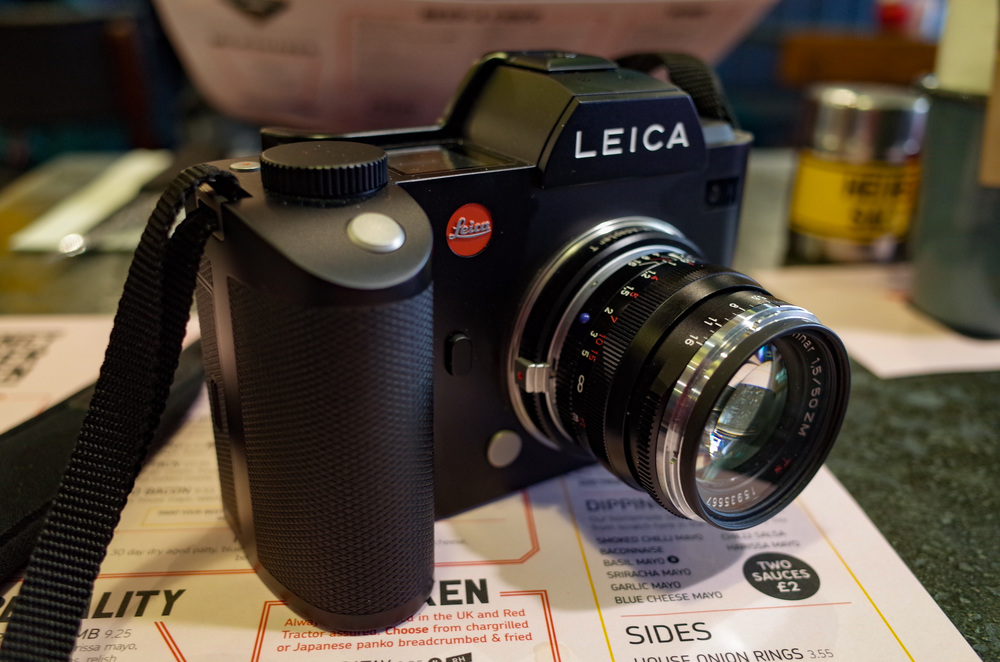
Despite all these arguments, the question of viability is important. Would an M-mount version of the Q or CL make money for Leica Camera AG? I suspect, while it would be welcomed by many users, it would probably not sell in sufficient quantities to make it financially attractive.
On the other hand, a Q with the L-Mount, or a CL with a full-frame sensor, could make a lot of financial sense. It would still keep M-glass owners reasonably happy. They would have to put up with continued use of an adapter, but then an adapter is currently necessary on any mirrorless camera of any make. It would also appeal to those who prefer a smaller, more handleable full-frame ILC camera. Many people, and I am one of them, find the SL (and the new Panasonic S1) too big and heavy for general use.
With smaller M lenses such as the 28mm Elmarit, the 35mm Summicron or, even, the 50mm Summilux, the SL is a big beast to handle. Most of the armoury of traditional M lenses sit like a pea on the SL’s drum. It’s overkill and that is precisely why there is all this talk of a smaller full-frame mirrorless camera.
A Q or CL ILC might tempt. With the arrival of the L-Mount Alliance and the prospect of third-party lenses – some, I hope, lighter than Leica’s offerings – the chances of such a camera succeeding are increasing.

Most would expect an $8000 camera without basic features like autofocus or video to also have limited appeal… yet here we are in 2019 and the M camera has enough appeal and a cushy enough profit margin to keep the German factories in business.
I think M lenses are Leica’s true strength. Impeccable quality and one-third the size/weight of comparable modern lenses. (Aside from other rangefinder lenses.) It makes sense for Leica to at least experiment with another type of M mount camera, to lure more users into their lens catalog. A more modern M mount camera could be great. Personally I’d be very interested in a Leica Q with M mount, IBIS, even autofocus in the style of the Techart Pro adapter.
Not as a replacement for the M rangefinder cameras, to be clear, but as an alternative native digital back to the excellent tiny M lenses.
Price is always mentioned as a major negative factor in any non-specialist review of Leica products. But Leicas exist in a sort of parallel universe with their own standards of what is expensive and not expensive.
This is especially so with M lenses and it’s in Leica’s best interests to help extend demand (based on a very healthy used demand) by keeping the rangefinder alive and, even, seeking ways of popularising the use of M lenses on mirror less models.
totally irrelevant and off topic but does anyone of you if Leica stopped the X-U production? It no longer appears on Leica French site.
Well, it was the last of the Mohicans and I suspect they haven’t made any for a time. It probably stayed on the sites as a current model until they’d shifted all of them. I wouldn’t be at all surprised to find it has been discontinued.
I’m not really qualified to comment but it seems to me that “Leica economics” have never had to run lock-step with the broader camera industry.
So there may well be a market for a smaller, mirrorless M mount. I’m not as certain about an L-mount version though, as I suspect Panasonic (who are working on a smaller S1*) and maybe even Sigma (who have announced a foveon sensored FF is underway) will beat them to that market. Especially if either company also produce a couple of pancake style primes (something like the Pentax FA43 or FA31 comes to mind) to accompany the line to really emphasise the compact nature of it.
Leica have the small M lenses. Unless they get Panasonic to build them (possible) I’m not sure it makes sense to create small L full frame lenses as yet another line of Leica products. And smaller AF L mount glass probably won’t meet Leicas optical quality or rendering characteristics. My guess is that if the SL2 is already on its way, you won’t see a smaller Leica L for a long time, if ever.
And if we look at the M lenses, then in my opinion the choice of viewfinder becomes tricky. I still think the big appeal of such small glass lies in an optical focusing system – which would need to be RF. But then you don’t have the exposure advantages of an EVF, and would most M fans really be happy with focus peaking in what will still be an expensive investment? I can’t answer that.
Hi Jason
A smaller L mount camera from Panasonic might easily be in the pipeline, but it would be very unlikely it was optimised for M lenses (why would they make the sacrifices in terms of cover glass thickness and extra firmware so that Leica can sell more lenses). . . . . Mind you, the number of people who don’t seem to notice the smearing that thick coverglass causes never ceases to astonish me, so perhaps that doesn’t matter!
.. and don’t get me started on focus peaking – I used to be the biggest advocate when EVFs were rubbish, but now they’re so good I think focus peaking is responsible for more out of focus pictures than anything else! It’s like using a crutch to help you run 100metres!
Jono, agreed on focus peaking. It can be highly misleading and with a modern EVF its better to just use your eye, aided if necessary, with magnification. On the other subject,of “number of people who don’t notice…” then I think the cap fits very well here at Macfilos Towers!
A surprise for you, Jono. I fully agree about focus peaking, which is really only of use in long landscape shots to confirm the full depth of field. It can be most misleading up close or with narrow depth of field shots. Using a magnified view and the viewfinder is much more reliable, particularly with the latest high quality EVFs. Experienced Leica rangefinder users know where to place the point of focus in order to get the shots they want. Focus peaking can be most misleading in trying to do the same thing. Some people switch it off, but I keep it on just for reassurance.
William
Focus peaking is one of a range of tools available to be used in the composition of assembling light in images. Auto focus is also a tool as are rangefinder mechanisms. EVFs and Live-view and Optical viewfinders are other pieces of the chain of tools used to manipulate levels of lens focusing. All of these tools available are possible to be part of great image making. All of these tools are also available to be part of poorly executed image making.
The concept of “in focus” is possibly over emphasized. Getting some part of a photograph in focus with any of these options of methods is not hard. Getting the correct focal attention within a composition of light on a plane is where our attention would be well focused.
David
Very interesting discussion and I agree with most, though as the existing CL’s sensor provides ample image quality for me so I do not feel any great need for a full frame version. Instead I pray for a revised CL, or rather CL2 with good old fashioned conventional shutter and ISO speed dials instead of the existing CL’s very poor multi task control wheels and wildly floating focusing sensor.
Unlikely to happen? Probably not yet I for one genuinely such a basic revision, even with the existing sensor could still prove a all time Leica money spinner and winner. I.E much as the original Q has been and which I too love because the controls work in the way a real camera should do.
Meanwhile I shall be keeping my existing ‘Marmite’ CL quite simply because I just do not want to take yet another big financial hit changing systems, though I would most certainly lash out and buy a revised CL2 if Leica altered the controls to work as a mini SL. Which incidentally they should have done in the first place, and I suspect would still be quite easy to do.
I agree with you on the controls of the CL, Don. A more traditional physical layout (as in the Q, as it happens) would have been more successful. The one snag is the lack of aperture runs on the TL lenses, something which complicates the control interface on any camera these lenses are used on. It as a curious decision to design these lenses without an aperture ring. Peter Karbe cites weight as the reason there is no image stabilisation, but an aperture ring would not have added to weight. After all, the Leica DG designs for micro four thirds have an almost perfect UI, with a physical aperture ring which sets them apart from their Lumix equivalents.
Personally the lack of a aperture ring is not so much of a problem as I also use Canon DSLR’s and so I am both used to and happy to be without aperture rings because Canon never have fitted them to the EOS lenses, what Canon cameras do have however are very easy to use and well designed controls.
Hi Don
I really like the controls of the CL – more in fact that the SL, so I guess it really is Marmite. Except that it should have a joy stick instead of the arrow buttons on the back. . . and the APSM change is a waste of a perfectly useful function button.
I think that Leica are heading the way of the 3. button back and wouldn’t be surprised if the SL2 went in the same direction. I think they’re also concentrating on being able to do everything simply with your eye to the camera. So, for me, replace the arrow buttons with a joystick and give it some weather sealing and the the CL would be just about perfect. . . . oh yes and a 16-60 faster zoom to go with it please (don’t mind if it’s a bit bigger!)
But I agree with you about the CL image quality – I think it’s fantastic, and I still believe that 24mp is the sweet spot. I did a lunch time walkabout today with the CL and the little 28 Summaron and have a batch of sunny and impeccably sharp landscape shots (sunshine after the rain) . . I also have wet feet!
And, Jono, don’t forget the function lock (especially necessary with a joystick) for we troglodytes who insist on centre focus and recompose. I did note your comment that this can lead to focus problems, but I just prefer it.
Thanks Jono. As always I very much appreciate your thoughts, tests, genuine opinions and will always take note of and respect the views of someone like yourself whose actual photography is also so superb.
As a former long time Pro Photographer and picture editor your views always count more than most for me as I also love your pictorial results which in short to me is the proof of the pudding, so I admonish myself, and on your say so will try again to actually get to like my CL.
My problem though being at 82 maybe I am just a bit too long in the tooth to be able accept the many CL control and setting changes away from what for me have been the so simple to understand and use norms throughout virtually all of my long lifetime.
I have to say, Don, that there are two distinct sides to this issue of hard/soft controls and it is by no means just an age thing. I’m not far off you in age, as you know, Yet despite being very receptive to technology and loving anything new, I still struggle with soft controls.
I understand Jono’s point about the benefits of moving over to soft controls, but I still tend to prefer the traditional dials. I like to be able to glance down and see speed/aperture without having to squint through the viewfinder or check that little screen on the CL.
However, I am aware that perhaps I don’t spend enough time following Jono’s advice and persevering with the soft controls. Perhaps the two of us should make a resolution to give Leica the benefit of the doubt and make a big effort to master those soft dials!
That said, I still have a feeling of peace when I pick up the M10 with its straightforward, traditional layout. Home, sweet home. I sometimes wonder why Fuji, a Johnny-come-lately rangefinder-style cloner, should stick so resolutely to simple, traditional physical controls. Must be something in it, even now.
Indeed, I know some people for whom the controls have been one of the major draws to the Fujifilm X system.
That’s right. I also know many people who are with Fuji for that very reason. In a sense, Fuji snatched Leica’s position as the provider of mirrorless cameras with traditional controls. Despite justifications for soft controls, and the suggestion that we should embrace a smartphone-like interface, the Fuji example proves that there are many people out there (and not just old fogies) who actually prefer having direct physical access (and access to view from above) the two major exposure settings at least.
I do not believe the CL (or the T, TL or TL2) have been major sellers. Price and lack of features (particularly lack of stabilisation) have played a part in this, but I think one of the main reasons is that the approach has been too radical. First the T, which was a shock, and didn’t sell well. Then, instead of returning to basics, the CL arrived as a sort of halfway house.
The success of the Q and Q2 should be enough reason for Leica to realise that people do like old-fashioned controls.
Jonathan, I know, has diametrically differing views and I accept that there are two camps out there. But the proof of the pudding is in the sales. If the cameras are not selling well then there are reasons, as outlined above.
I think the M and S are Leica’s strongest systems, each showing a good implemention of different control paradigms.
The S is an interesting concept, putting a larger sensor in a body similar to 35mm-full-frame size and handling, but I also think it is in a tough place between its concept and price. The Hasselblad H6D 53.4 x 40.00mm sensor and a lens (excellent Japan-made Fujinon lenses with Hasselblad Sweden-made central shutters) is not that much more expensive than the S 45 x 30mm sensor and a lens — and the Hasselblad has the added bonus of being modular, with the digital back usable on Linhof, Alpa, or similar technical camera systems.
I think the S might have been more successful as an evolution of the R system, with a 35mm-full-frame sensor and a price similar to or slightly more than a Nikon D5. Especially since systems such as the Nikon D850 and Canon 5DS R with Zeiss Otus lenses give performance close to that of “baby” medium format sensors for a lower price. I think many professional photographers that used medium format film have switched to 35mm-full-frame digital SLR cameras.
I can understand, though, Leica’s interest in developing some less expensive APS-C systems to try and gain more customers — but agree that they might be better with traditional controls, as the style of camera is well-suited to them.
The optical viewfinder to computer comparison is not quite fair. Surely, one can demand a little more enjoyment from a fine tool like a Leica rangefinder camera while still using a computer to communicate. Optical viewfinders and electronic can both exist in photography — there are still many advantages to optical viewfinders.
You will have noted that I mainly use optical viewfinders myself as I have about 40 of those ‘fine tools’, but EVFs are now really good and most of the photographs taken on the planet are made using electronic screens on phones. I was using the ‘connection’ to make a point that is pretty self evident at this stage. Yes both types of viewfinder can exist and for Leica’s survival the optical viewfinder has to continue, but the market has spoken on the broader question.
William
The EVF is certainly a technology of interest to people right now, but part of me wonders if it will have long term dominance. As you have noted, the camera market is significantly shrinking, which I think will leave professionals as a sought-after segment of customer, and I think that currently many if not most of these photographers are still using optical viewfinder SLR cameras.
The optical viewfinder is favoured in wildlife photography for longer battery life and more comfortable viewing over long periods of time. And the optical viewfinder is still the choice in the most elite systems such as Leica S, Hasselblad H, and Phase One XF.
In the Leica rangefinder the optical viewfinder allows for, amongst other things, the viewing of context that is so identifiable with rangefinder photography.
The EVF has as advantages various manual focusing aids and preview of exposure, but I am not sure that these are enough to sway all professionals.
For professionals and enthusiasts there are also personal views on photography that will come into play. More and more, manufacturers are making digital imaging devices more than they are making cameras in the traditional sense.
The DSLR is still the weapon of choice for professionals (who along with cameras are also a declining species – many media outlets no longer employ them) and also in more conservative markets such as the US. Camera manufacturers are nervous about what way the market will jump next and are slow in introducing new models and many are manufacturing in small numbers at first (just like Leica) and then filling the market when the model/concept catches on. prices have been going North at first and then South again, through discounting, a real sign of a nervous market. The EVF (or mirrorless as some would say) has really got traction through the products of Sony which is an entertainment and electronics conglomerate and the rest of the market is now following. The next big jump has to be a computational imaging device for professionals, most of whom will already have some computational features on their smartphones. Leica must have surely learnt something about this from its cooperation with Huawei.
Yes, optical viewfinders will continue even after the flapping mirrors have largely disappeared from current models. The finest viewfinder I have ever used is the Leica Frankenfinder which can make the photographer feel like Canaletto re-imagining Venice when using the Leica WATE. Long may they continue.
William
Well, that is a whole other topic. In my opinion, digital imaging brought big changes and started the decline of photography. Computational imaging will be the end of photography. People will still be making images, but it won’t really be photography. Of course, there will still be some people doing photography — working with light, optics, and physical processes.
I am always amused when people say they prefer optical to electronic viewfinders as they type their views on an electronic screen. The standard of EVFs is very high now and they should not be judged by the awful add-on viewfinders currently supplied by Leica. It should be possible to produce an EVF today that is very bit as good as an optical finder for all practical purposes.
All that being said, I must confess that I have no interest in the current L and Q products from Leica. My interest in Leica models only extends to M and LTM cameras and I have a very large number of them to prove the point. I believe that the excellent M10 takes the Leica optical rangefinder concept as far as it can go for the time being. It would save on development cost to shoehorn a top quality EVF into an existing M rangefinder design and to test the potential market with that. The M240 has more space than the M10 and using that as a chassis would make sense.
In a rapidly declining market for stand alone (ie not in a smartphone) cameras Leica has to ensure that it does not leave itself stranded by having too much of a ‘Back To The Future’ strategy. So the other strand of its strategy might involve producing a small to mid sized camera that will take its ‘L’ class lenses, suitably reduced in size as suggested by Mike. I had thought that the CL, being roughly the same size as my beloved LTM Leicas, might attract my attention, but my interest evaporated in seconds when I saw the two dial + LCD set up. So, to get my attention, ergonomics would be just as important as size.
The camera industry is facing a very doubtful future. There are rumours here in Dublin that sales are so slow now that massive discounting across the industry is on the horizon. Leica will need a carefully worked out across the board strategy, leveraging its heritage and strengths, to survive and prosper in such difficult times.
William
I picked up (..not bought, but picked up..) the Q when it first came out, and said “Great weight, great camera, great autofocus – but just one fixed lens? No!”
I can’t remember if I’ve just been saying it to myself since the Q came out, or if I wrote this to Dr Kaufmann ..can’t remember: but what I’d buy would be an interchangeable-lens Q, with a motoring mount, like the whatsisname autofocus adapter for M lenses on a Sony SLR ..what’s it called? ..the Techart adaptor, that’s the one!
Install a motorised mount on the Q [..with the option to turn it off, to focus manually if you really want to..] so you clip on an M lens, set the lens’ own focus to, say, 5 metres, and let the camera then do the focusing for you! ..It wouldn’t work so well with floating element lenses, as they produce best near focus by moving their INNER elements, but with all other lenses which move the entire glass block as you focus further or closer, a motorised mount would be perfect ..for me, anyway.
(Remember the Contax AX? ..Same thing, except that the AX moved the film back and forth while the lens stayed static, so you could use all your existing manual focus Contax SLR lenses on it!)
It works perfectly for M lenses with the phase-detect autofocus of, for example, the Sony A7RII (using that Techart adaptor). So it’d be great to have that motorised autofocus with existing – and previous – M lenses on a full-frame lightweight Q. It’s the obvious move for the company: a new camera, use all your existing M lenses, choose autofocus if you want it, great viewfinder.
Maybe they’re working on it. If they’re not, they should be.
I tried an SL – too big, and too heavy. Add those ridiculously huge SL lenses (with autofocus inside and an auto aperture motor inside, too) and the size and weight are truly ridiculous ..and from the company which brought the world the first (pretty much) pocketable, interchangeable-lens, miniature, 35mm cameras.
I want small, light, silent, fast and accurate autofocus on a Q. With interchangeable lenses from 10mm to 200mm. They could do it ..but for some silly reason they haven’t ..so far!
Ah i hadn’t thought of a motorised Mount but, having used the Techart, I can see merit in the suggestion. This really would be unique and could be successful. It’s a mystery to me why someone hasn’t expanded on the Techart concept since it does work well. It won’t beat any speed records but it does effectively turn dumb M lenses into tiny autofocus lenses.
Interesting to have your views Bill, especially in view of your exemplary relations with Leica. A full-frame CL would indeed be attractive and, I think, viable from a financial point of view for the factory. They do need to come up with some smaller full-frame autofocus lenses, though.
Hi Mike, I also agree with you on the size of the full-frame AF lenses. That was another reason I did not get on with the SL, which came with the 24-90. It was a beast! Big cameras and lenses no longer appeal to me as they did when I was a kid. The M10 and 4 lenses in my bag is about my limit now.
I think the Apo-Summicron-SL lenses are a nice balance of performance and size and look to be a good fit with the SL — but would perhaps still be a bit large on the CL. Maybe a Summarit-SL or Elmarit-SL line of prime lenses could move well between the SL and CL.
Mike, Bill, Brian
Smaller, Full Frame, AF lenses is, sadly (apparently) magic . . at least, unless you sacrifice either speed or quality.
On the other hand, seems to me that a full frame CL would be great – I have no problem with the lovely APO summicrons on the CL body, and obviously it’d be great with M lenses as well. I think your idea of Summarit SL lenses is a great idea Bryan.
Putting the 47mp sensor from the Q in it would also be great – and would mean that you could use the great TL lenses in crop mode and still get decent resolution.
Of course, if I knew anything about any of this I couldn’t comment!
I would trade in my S1R like a shot for a CL2 with 47mp and 6-Axis stabilization that weighs the same as the CL!
Did you have inside information? Should I order one?
I have been pushing this argument with Leica since the Q came out. In discussion with my contacts at Leica and with Jono, it was explained that this would not be doable. Last time I had this discussion was at Leitz Park last June.
A full frame L-Mount CL, on the other hand, should be much easier to accomplish. Put the 24 MP sensor from the SL into a CL body and I think you would have a winner. I tested the SL when it first came out at my son’s wedding three years ago along with shooting my MM1 Monochrom.
I agree with the sentiment that the Viso 020 is getting long in the tooth and is no joy to use. I found the Live View on the back of my M10 to be much more in keeping with my workflow than the Viso.
While a fantastic camera with a wonderful EVF, the SL is just too heavy and bulky for me compared to the M. On the other hand, a FF CL might just be the ticket!
The future of Leica ICL digital mirrorless is autofocus ‘L’ mount. Any manual focus digital M ‘mirrorless’ would likely only appeal (and only in limited quantity production) to existing Leica rangefinder / Leica SLR enthusiasts (and relatively few ‘converts’) … and would inevitably impact on both Leica digital M and analogue M rangefinder sales. The global camera market is shrinking because so many ‘photographers’ are content to use smart phone cameras. Relatively few photographers, especially those comprising the ‘point and shoot’ brigade’, understand or have the inclination to rely on manual focusing … it’s a very alien ‘pass’ in their otherwise totally auto workflow. For all of us wrinklies, who are sufficiently old and ugly to appreciate and tolerate manual focus, there are many millions of ‘auto-everything’ customers who know nothing about Oscar Barnack and why M lenses and cameras have succeeded in ‘hanging on’ (just) in a very crowded market place. Leica cameras are to them, “… Ooohh!! … they’re very expensive … aren’t they ?? You must have loads of money!!” I’ve heard that and similar comments ‘chuckled’ so often. Thus for them, Leica is not given a second look. A product line survives by its sales … not by its design. The design might be ‘possible’ … but at the end of the day it’s the ‘bottom line’ which counts … and a positive bottom line depends on fulfilling a ‘healthy demand’. Would their be sufficient demand in the already too crowded marketplace for an expensive EVFd M mount manual focus camera requiring basic M lenses costing c. £1150 – £2200 each?
I think you are expressing what I tried to get across. An M-mount camera would be a nice product and would appeal only to existing owners of M glass. An L-mount camera would have wider appear. As you rightly say, though, it’s a big financial commitment which the vast majority of people couldn’t justify.
I have the Cl with a couple of lens and just taken delivery of the Q2. I far prefer the control system on the Q2 to that of the ‘soft’ controls on the Cl. The working of the Q2 is so similar to that of my M10 – therefore if Leica decide to produce a new full frame mirrorless – then based on the Q2 with either an L or M mount would certainly be a very attractive choice.
I thoroughly agree. The Q2 is near perfect. In my very humble opinion Leica made a big mistake I’m not equipping the TL or SL lenses with a physical aperture ring. When all adjustments have to be made from the camera, control protocols get complicated and the CL is a good case in point. In my opinion it would have been more usable with a similar two-dial layout to the X1 and X2. But they wouldn’t regard they as progress.
I have been using the Panasonic S1R for the last month or so with a range of lenses – M, R, and the native 24-105 — all excellent – the wide angle Ms especially; I have also found that the TL lenses (I have the full range) work exceedingly well with this sensor — better in fact than on the CL/TL2. The 55-135 especially is perfect with the Lumix’s 5-axis stabilization — its always a little dodgy on the CL. So I have no regrets – especially given the potential cost of the possible SL2.
I have been tempted to get the S1 for evaluation but the only thing stopping me is it’s size. I agree on price through. After the huge discounts on the current SL this month I am losing confidence in Leica to keep used prices high. The S1 is terrific value and it will soon be discounted I don’t doubt.
Hi There Tony
I’m glad your pleased with M performance on the S1R – I did ask Panasonic for a loaner so I could have a check, but they ignored me!. Technically speaking I would expect there to be problems towards the edges near infinity, but most people when they’re checking these things look at subjects at 3 or 4 metres (because it’s so much easier).
I guess you’re aware, but the problem is the angle of incidence and the thickness of the sensor glass. The angle of incidence increases as the rear element gets closer to the sensor (ie the closer you get to infinity). Leica cameras all have thinner cover glass than competition for this reason (the advantages of thicker cover glass are better IR filtering, and less visible dust on the sensor – which is why non Leica cameras have thicker).
The best way of testing I’ve found is a very high hedge (or brick wall) at 50 metres or so.
I’d love to use the 55-135 on the S1R – sounds like a marriage made in heaven – it’s great on the CL, but of course the crop factor on the SL makes it rather low resolution (no problem on the S1R!)
All the bst
If you remember Mike at the Leica SocietyAGM I asked Jason about the future of the M camera and he was lost for words for nearly a minute!! One reads what you want into that but I wonder if the rumour might have been on his mind?
David
I do remember, David. I didn’t read too much into it, but clearly there is something afoot. I’ve thought for a long time that a smaller version of the SL would sell, but who know what they will come up with.
Personally, I think an EVF M would be a mistake — the optical rangefinder is just too integral to the camera’s identity. But I could be biased, as I like optical viewfinders and do not like how hard EVF is being pushed across the industry.
I think the SL is a good platform for adapted M lenses. But, if there is interest in something smaller, maybe something like a Q-I (I for “interchangeable” lens) could work.
Or, I suppose now it would be a Q2-I. I would have said it should have M-mount, but since the Q is established as autofocus, it would perhaps be L-mount, with adapter for M lenses.